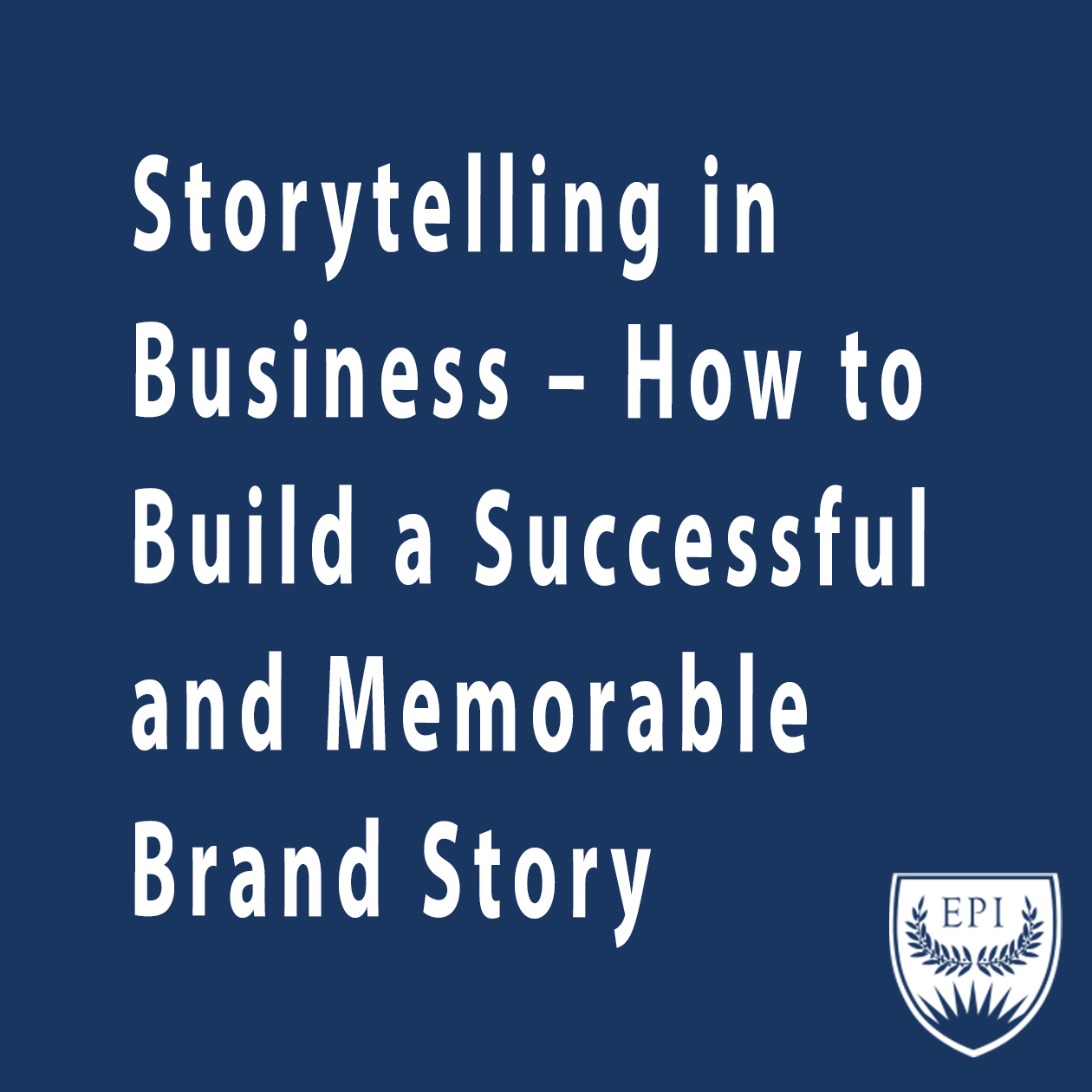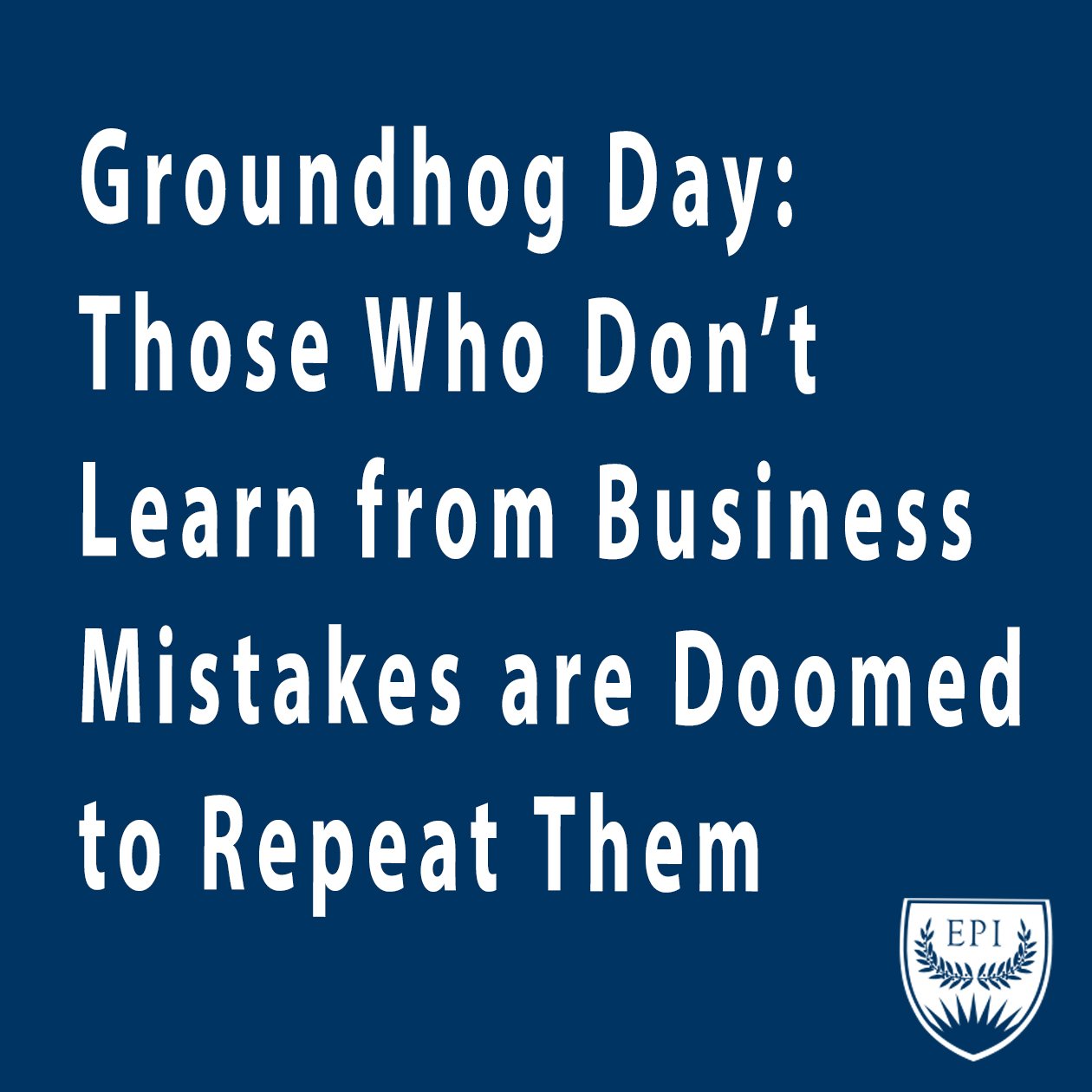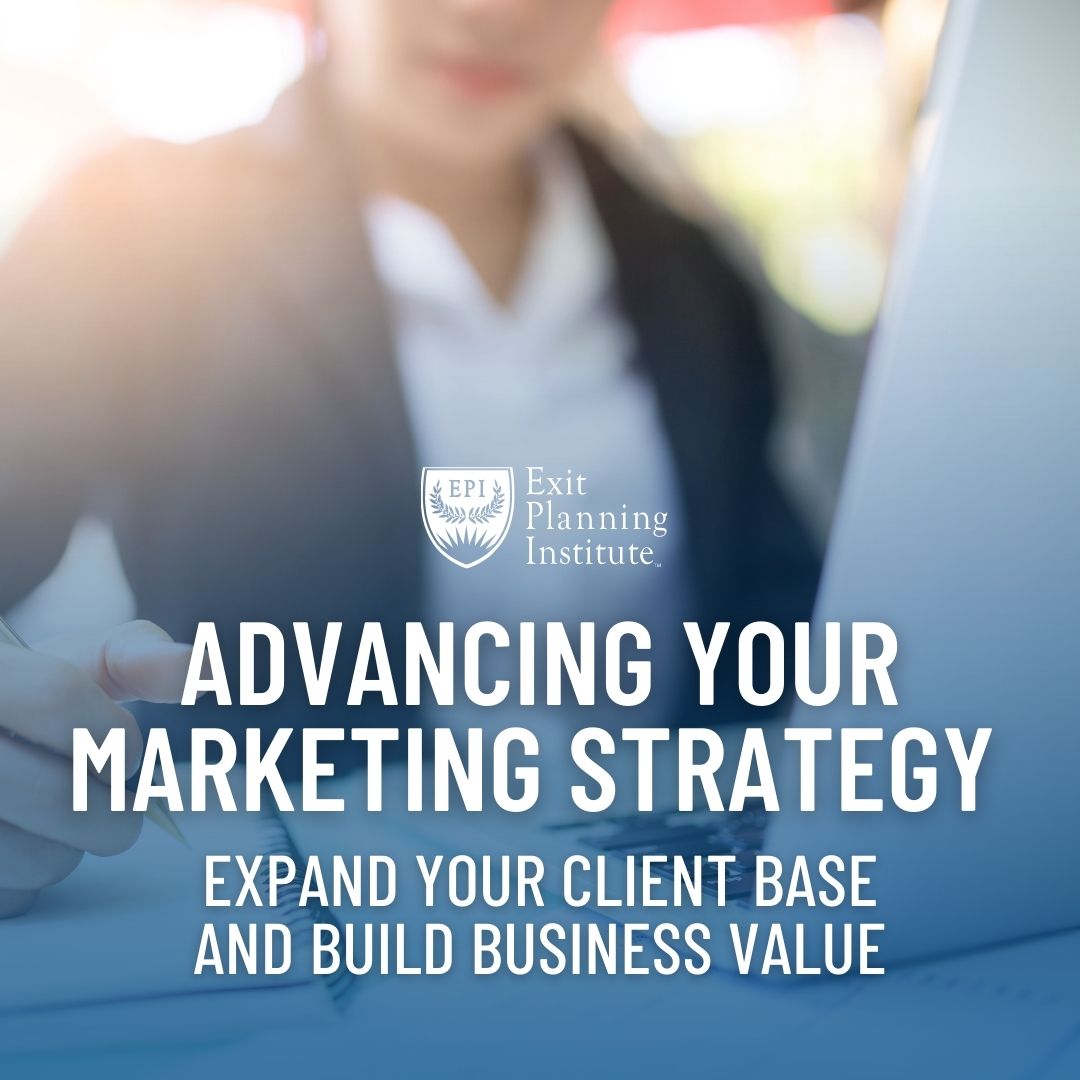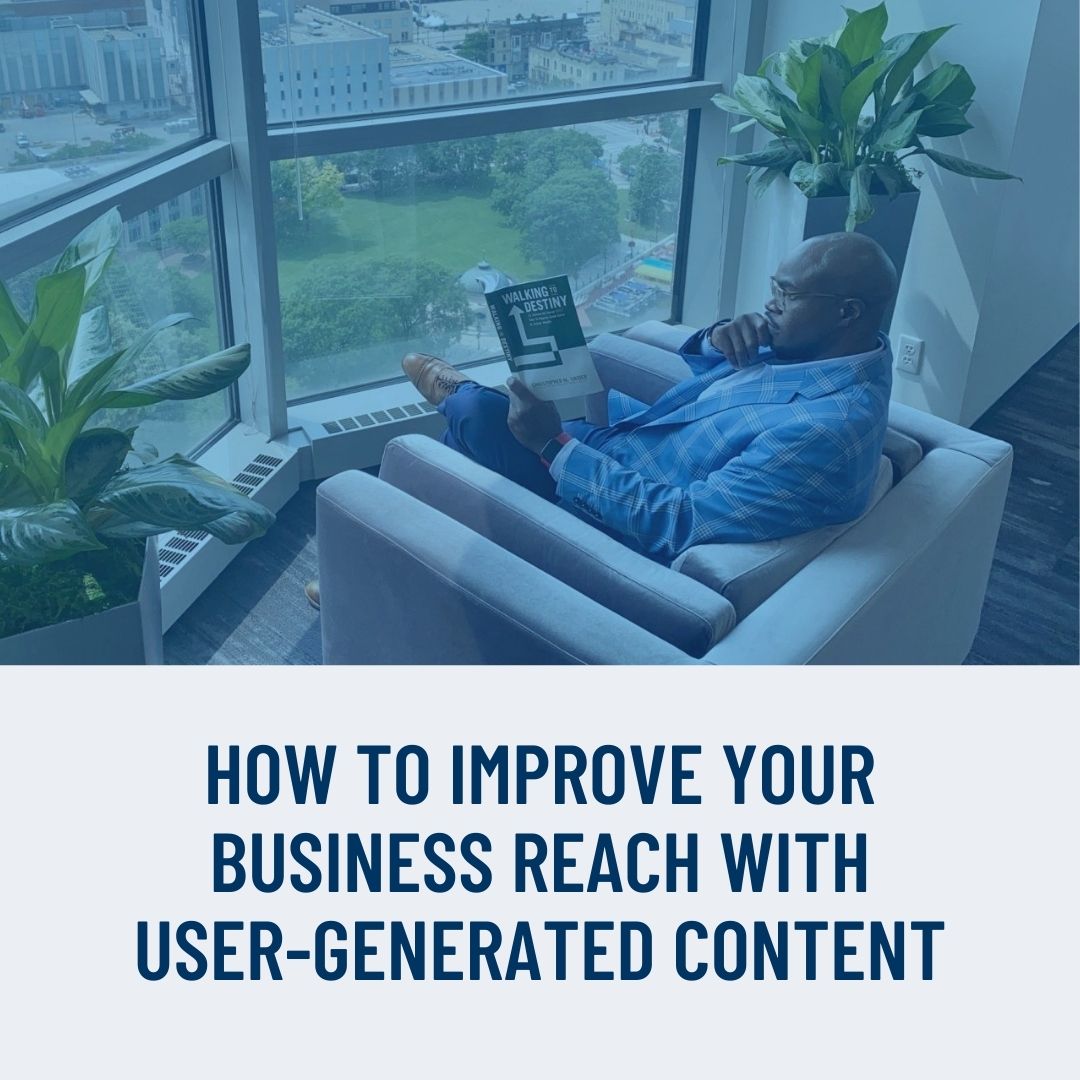
THE EXIT PLANNING BLOG
Keep up-to-date with exit planning, succession planning, industry trends, unique specialty insights, and useful content for professional advisors and business owners.
Share this
Storytelling in Business – How to Build a Successful and Memorable Brand Story
by Colleen Kowalski on April 14, 2021

“We offer a service, please pay us for it. Thank you.”
On a scale from one to ten, how effective do you think this marketing technique would be at growing your business? It’s a trick question, because the answer is zero. No customer is going to work with your business simply because you asked nicely. The key to all successful businesses starts and ends with their ability to tell a compelling story. While this may seem like an oversimplification – surely a business must have a good product or fill a need to be successful, right? Without concisely, yet creatively, sharing your brand’s story, your business means nothing in the eyes of the consumer.
What is The Point of a Brand Story?
Does your business have a story? If so, what does it say about you? According to Forbes, “Your business’s story doesn’t need to be elaborate. In fact, if your business doesn’t have an earth-shattering history, your story shouldn’t try to create one. A genuine narrative is more likely to connect with consumers than one without a shred of truth”. Your brand story should be crafted with your target audience in mind.
Consider your favorite television show. Why does this show stand out to you as your personal favorite? Maybe you watch it because an actress you admire has a starring role or perhaps you watch for the costumes. But more than likely, you watch this show because the story is compelling and well written. You are the intended audience for the story they are telling, and this story keeps you coming back to the show week after week, or in this streaming age – makes you click “watch next episode”. A well written story of your business will have the same effect on your target customers. According to an article in the Harvard Business Review, “Every storytelling exercise should begin by asking: Who is my audience and what is the message I want to share with them?”.
There may be many stories in your business that you want to share with your consumers, but the story of your business is the most important one to tell. This story will inform any potential consumers about your brand, products, and ultimately fosters a genuine connection between customers and your company. Forbes states, “Your business story should be engaging. But if it doesn’t have a clear focus, you’ll quickly lose the attention of consumers. Establish context right off the bat”.
How Do I Write a Brand Story? – One-Liner Exercise
Every good writer has at least three loose story ideas swirling around in their mind at any given moment. The best writers know how to put those ideas down on paper in a cohesive, yet engaging, story. In your business you probably have a few story ideas in your head as well.
The problem is, with so many stories to tell – how do you pick the one that encompasses your brand? According to Marketing Made Simple: A Step-By-Step Storyboard Guide For Any Business, the best business stories sell your brand to a customer much like a trailer sells a film to an audience. “When a screenwriter writes a film, she must also write a one-sentence description of the screenplay that makes investors want to take a risk on the story. After that story is turned into a full-length feature, that same one-liner is used to get you to go see the film”.
In your business, a one-liner consists of three parts: The Problem, The Solution, and The Results.
The Problem
Every story begins with a problem that customers may face in their day to day lives. Without a problem in a story, the audience loses interest and closes the book, turns off the tv show, or walks out of the movie theater. Marketing Made Simple says that, “Stating the Problem is a way to be remembered in your customer’s mind… if you want to be remembered, associate your product or service with the solution to a problem”. This is not the space to talk about every problem your customers may face, it is a hook to attract those customers who face the most common problem your business can solve.
What are some problems or pain points your clients/customers face?
Think about your competition, what problems do they create in their services that you do not?
The Problem = Many business owners do not understand “Exit Planning”
The Solution
The only reason we buy anything is because it solves a problem. Whether that be buying a pair of shoes because you have none to match a particular suit or purchasing a bagel on the way to the office because you forgot to make breakfast before you left, every transaction solves a consumer problem. An issue some people face when creating one-liners is failing to connect the problem to the solution. In your one-liner, you might be tempted to share how you came to the solution to this problem rather than just stating the solution. Take the problem we stated above. “We began our career at EPI in 2012 when we acquired the company from…” While this adds backstory, it does not solve the problem and opens the story up for more questions and therefore, more confusion.
What is the solution to the problem you stated to open the one-liner?
Is your solution simple, clear, and easy to remember and repeat without any industry jargon?
The Problem + The Solution = Many business owners do not understand “Exit Planning”, at EPI we offer a variety of educational courses and materials about Exit Planning for owners and advisors
The Result
Have you ever read a book or watched a movie that left you thinking, “Huh, I spent all this time for that ending?” Stories crumble without a satisfying conclusion that encompasses the problem and the solution in a concise way. The result portion of your one-liner should act in the same way. Marketing Made Simple says the result, “should release all the tension you created in the first section”. You want the result to be a tangible thing that your customers will experience. For the best “results”, make it something they can see or feel in the process of working with your company.
What will your customers see/feel after you solve their problem?
Add “which results in…” after your solution to get a good idea of tangible results.
The Problem + The Solution + The Result = Many business owners do not understand “Exit Planning”, at EPI we offer a variety of educational courses and materials about Exit Planning for owners and advisors which results in better prepared owners and more holistic advisors in the Exit Planning Marketplace.
One-liners are an easy way to share how your business impacts customers. This one-liner can be used on your business cards, as a social media profile description, or as the opening to a more in depth “About Us” section on your company website. The most important thing to remember about creating a company one-liner is that it is easily repeatable and works well whether written down or spoken out loud.
As stated in a Forbes article, “Business stories should have a clear outcome. Provide a hopeful, thought-provoking message with actionable points that compel your audience to connect with your brand”. In most cases, the first time a potential customer interacts with your brand will be through a story they have seen or heard about your business. Better make it a good one.
Share this
- Blog (545)
- CEPA (422)
- exit planning (249)
- CEPA community (187)
- Business Owner (172)
- Exit Planning Summit (97)
- EPI Chapter Network (89)
- Value Acceleration Methodology (80)
- Exit Planning Partner Network (76)
- EPI Announcement (49)
- Content (48)
- Webinars (37)
- Excellence in Exit Planning Awards (33)
- Marketing (30)
- 2024 Exit Planning Summit (28)
- 5 Stages of Value Maturity (26)
- Books (24)
- EPI Academy (24)
- EPI Team (22)
- Exit Planning Teams (22)
- Leadership (21)
- 2023 Exit Planning Summit (20)
- family business (20)
- women in business (19)
- Intangible Capital (18)
- Exit Options (17)
- Black Friday (16)
- CPA (15)
- Walking to Destiny (15)
- State of Owner Readiness (14)
- Chapters (13)
- Chris Snider (12)
- National Accounts (12)
- Small business (12)
- charitable intent (12)
- personal planning (12)
- Financial Advisors (11)
- Season of Deals (9)
- 5 Ds (8)
- About us (8)
- Podcast (8)
- Insiders Bash (7)
- Scott Snider (7)
- Christmas (6)
- Exit Planning Content Library (6)
- Case Studies (5)
- Owner Roundtables (5)
- Three Legs of the Stool (5)
- Value Advisors (5)
- financial planning (5)
- Awards (4)
- Circle of Excellence (4)
- Exit & Succession (4)
- Five Ds (4)
- executive training (4)
- EPI Thought Leadership Council (3)
- Owners Forum (3)
- author (3)
- forbes (3)
- DriveValue (2)
- Exit Is Now Podcast (2)
- Peter Christman (2)
- Veteran (2)
- Whitepapers (2)
- Business Owners Forum (1)
- SOOR (1)
- business consultants (1)
Subscribe by email
RELATED ARTICLES






